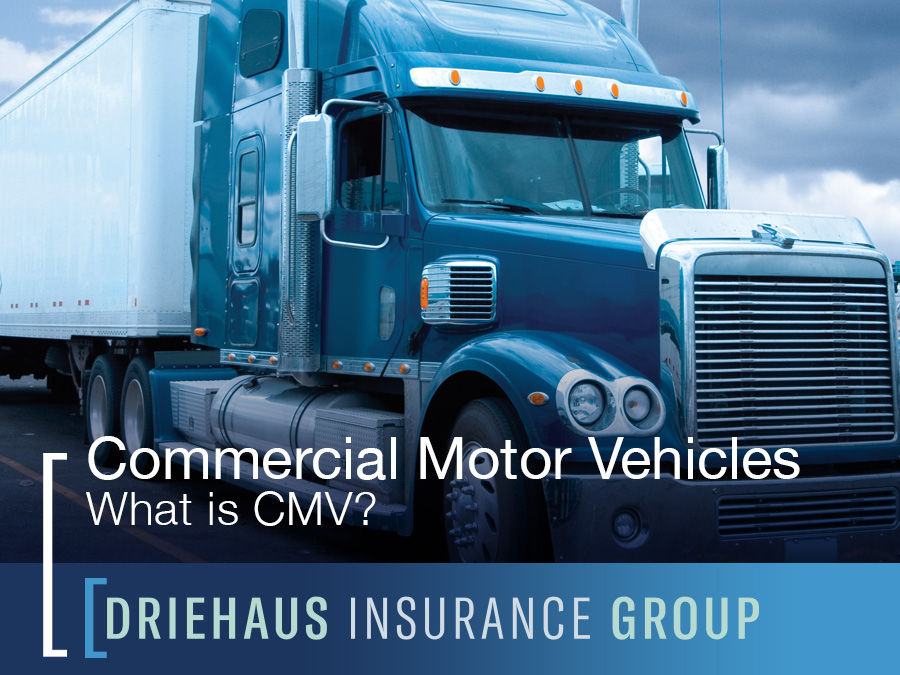Commercial Motor Vehicles
- cbeckman98
- Sep 26, 2023
- 4 min read

Your business may have responsibilities for complying with Commercial Motor Vehicle (CMV) regulations. The need for this is based on vehicle use, size and it can vary by state. This is a general look at United States Department of Transportation (USDOT) regulations.
What is a CMV?
The general requirements for motor carriers are found in Part 390 of the DOT regulation. In this section a CMV is defined as a vehicle having:
A gross vehicle weight rating (GVWR) as a single unit or a combination unit or 10,001 pounds or more – or -
Is used to transport more than 8 passengers, including the driver, for compensation – or -
Is used to transport more than 16 people including the driver and is not used for compensated transport – or -
Is used to transport any hazardous material that requires placarding
Definition 1 can be a tripping point for vehicle owners that tow trailers behind pick-up trucks or other light trucks. The combined weight of the main vehicle and the weight of the trailer and load must be under 10,001 pounds or the vehicle is a commercial motor vehicle. Do not rely on the GVWR shown on the main vehicle data plate.
Definitions 2 and 3 around transporting passengers makes the distinction between for hire transportation and transportation not for hire. Any for hire transportation has a much lower passenger count. The higher passenger count for non-commercial passenger transit would apply to any business or group using buses for their transportation. This can include schools, churches, clubs, and sports teams.
The hazardous materials regulations specify what products are regulated and the quantities that trigger placarding. If you are transporting chemicals, you should review these regulations carefully.
What does a CMV Require?
Ownership or operation of a CMV will trigger certain obligations. The short list of these are as follows:
You will need to file an MCS -150 form with information about your business and fleet with the DOT.
This requires you to obtain a US DOT number. MCS-150 filing is required every two years.
Your drivers will need to follow any regulations related to commercial drivers. This includes rules regarding use of cell phones and texting while driving. Pre-trip inspection rules also apply.
Maintenance of an accident register for any vehicle accidents involving a fatality, bodily injury, disablement or requiring a tow-away.
Vehicles must be properly marked with the legal name or trade name of the owner and the US DOT number.
Drivers should have a DOT medical examination and a driver qualification file should be maintained.
Even if you only operate within a single state, intrastate operations, you will need a US DOT number as most states use US DOT numbers for intrastate carriers.
Commercial Drivers Licenses (CDL)
Do not confuse the requirements for commercial motor vehicles with the requirements for a Commercial Driver’s License. These are two separate issues.
Commercial drivers’ licenses are required based on the vehicle size and use. These can be summarized as follows:
If the power unit of a combination vehicle exceeds 10,001 pounds and the combination GVWR is 26,001 pounds or greater,
A single vehicle that has a GVWR of 26,001 pounds or greater,
Is designed to transport 16 or more passengers including the driver
Is used for the transportation of hazardous materials in quantity requiring placarding.
There are different classes of CDL issued by the states. There are also endorsements that can be applied to the CDL to meet specific regulations. If you have vehicles that are of the size or use that require a CDL, you should review the DOT regulations carefully to assure compliance.
Insurance and Regulations
Complying with DOT regulations and having the proper procedures in place to meet these requirements is important to your insurance program. Failure to meet the legal minimums for operating your vehicles is a red flag to potential carriers. If the insurance carrier believes that you should have a DOT number and you do not, you must be prepared to address this missing data point. In many cases the insurer is relying on third party reports to make this call. You should ask for a copy of any of these reports, so you have the same information as the insurer.
Failure to comply with regulations can be an aggravating factor in claims settlement. If you are responsible for causing an accident, and you are found not to meet the minimum requirements for safe operation, your claim gets more complicated and potentially more expensive. This is a self-inflicted wound that you can avoid.
You can check your compliance status using an online resource. Safety and Fitness Electronic Records - SAFER is a portal that tracks fleet related data from the US DOT. You can see your safety rating as well as violation history. This is a tool used by most insurance companies to assess your fleet operations.
Getting Help
You do not have to become a DOT expert. Most insurance companies offer risk control advice, and many have fleet specialists to help you. You can also reach out to law enforcement agencies and ask for their assistance. Many law enforcement agencies will offer advice and consultation to help you avoid citations. The first step is knowing if you have questions.
In the time of “Only buy what you need”, if you don’t know the question, you probably won’t ask. Reach out to us at 513-977-6860 or via the internet at www.driehausins.com We will be happy to help you.


Comments